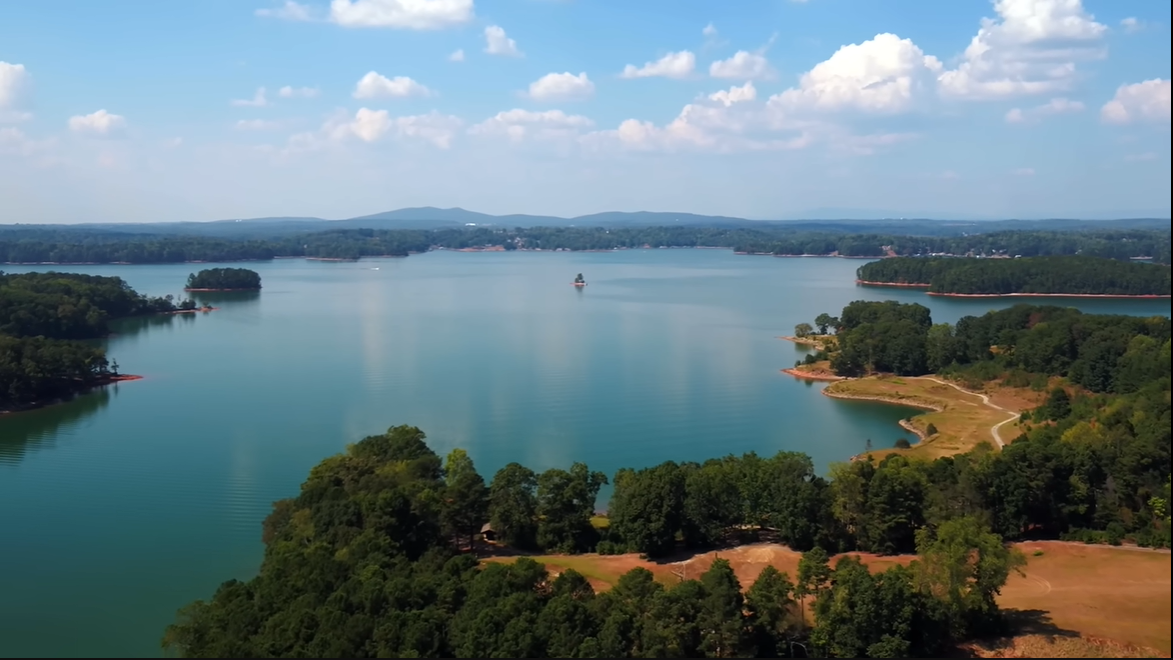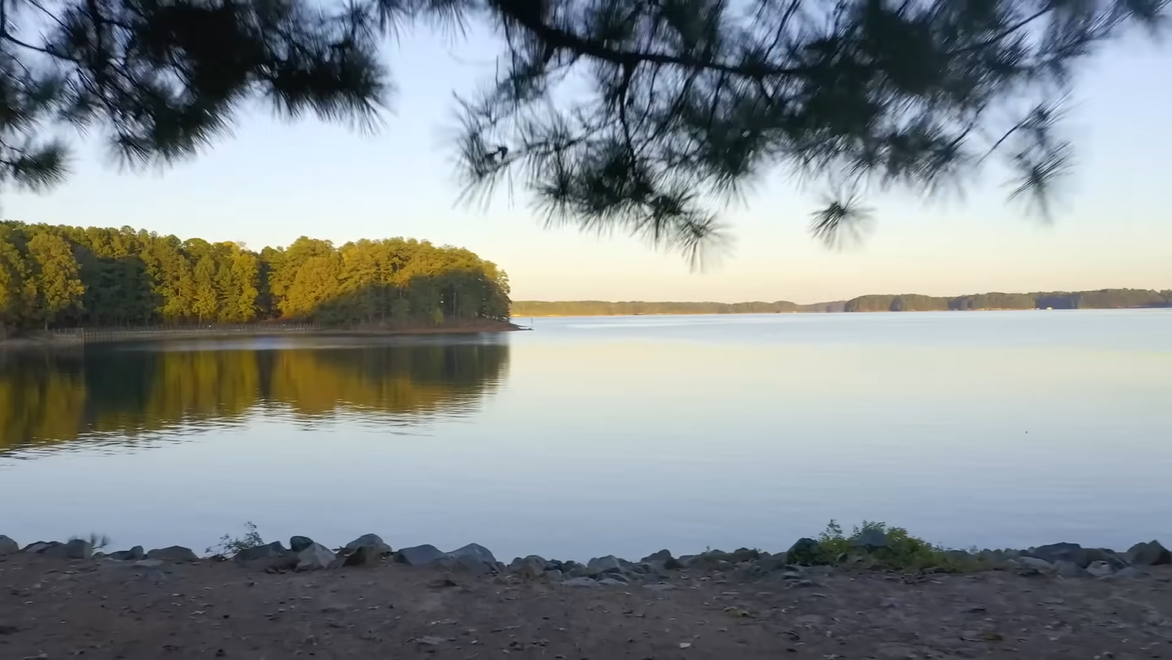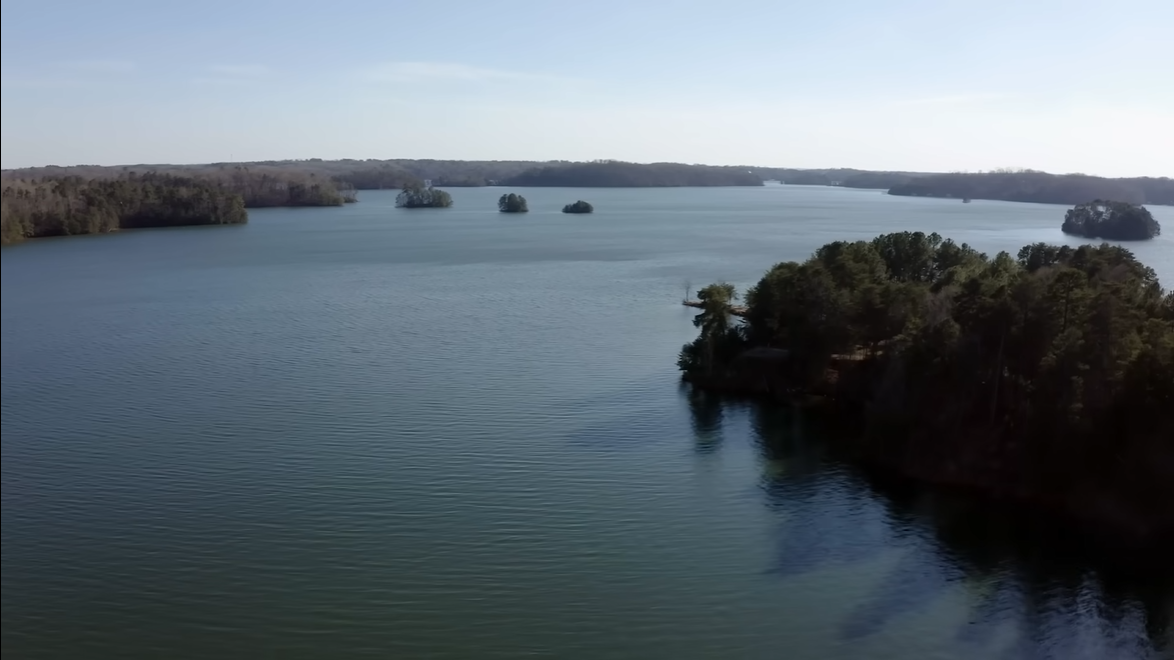Lake Lanier
Lake Lanier, officially known as Lake Sidney Lanier, is one of the most popular and scenic reservoirs in the southeastern United States. It is situated in the foothills of the Georgia Blue Ridge Mountains, northeast of Atlanta.
The primary purpose of Lake Lanier is to provide hydroelectric power, flood control, and water supply to the Atlanta metropolitan area. It serves as a reservoir for the city's water needs. Created by the U.S. Army Corps of Engineers in the mid-20th century, Lake Lanier has grown into a beloved destination for millions of visitors annually.
.png) |
| Lake Lanier |
Formation and History
Lake Lanier was formed in 1956 with the completion of Buford Dam on the Chattahoochee River. The U.S. Army Corps of Engineers constructed the dam to control flooding, generate hydroelectric power, and provide a reliable water supply for Atlanta and surrounding areas. The project was named after Sidney Lanier, a Georgia-born poet and musician, whose poem The Song of the Chattahoochee celebrated the region’s natural beauty.
The creation of Lake Lanier involved the flooding of several small towns, including Oscarville and Gainesville Mill Village. Over 700 families were displaced, and more than 20 cemeteries were relocated. The lake covers over 38,000 acres and has approximately 692 miles of shoreline. It is fed primarily by the Chattahoochee and Chestatee Rivers.
Geography and Hydrology
Lake Lanier is nestled in the foothills of the Blue Ridge Mountains, primarily in Hall, Forsyth, Dawson, Gwinnett, and Lumpkin counties. Its clear blue waters and rolling hills create a stunning landscape. At full pool, the lake’s elevation is 1,071 feet above sea level, though water levels can fluctuate due to seasonal demands and drought conditions.
The lake has a capacity of over 1 trillion gallons of water, making it one of the largest reservoirs in Georgia. It serves as the primary water source for the metro Atlanta area, supporting millions of residents.
.png) |
| Lake Lanier |
Recreational Activities
Lake Lanier is a hub for outdoor enthusiasts, offering a wide range of recreational opportunities:
1. Boating and Water Sports
The lake’s expansive size makes it ideal for boating, jet skiing, and paddleboarding. Several marinas, including Lanier Islands Marina and Port Royale Marina, provide services for boaters.
.png) |
| Lake Lanier |
2. Fishing
Anglers flock to Lake Lanier for its diverse fish population, including largemouth bass, spotted bass, striped bass, crappie, and catfish. The lake is renowned for its world-class bass fishing, with tournaments held throughout the year.
3. Camping and Hiking
Numerous campgrounds and hiking trails surround the lake. The Don Carter State Park on the northeastern side offers campgrounds, cabins, and trails through pristine forests.
4. Swimming and Beaches
Lake Lanier has several beaches along its shoreline. These beaches offer opportunities for sunbathing, swimming, and other water-related activities. Some of the popular beaches on Lake Lanier include:
- Sunset Cove Beach
- Buford Dam Beach
- Van Pugh Park Beach
- Lanier Point Park Beach
- Mary Alice Park Beach
5. Golf and Resorts
The Lanier Islands resort features luxurious accommodations, golf courses, and entertainment options, making it a favorite for vacationers.
Ecological and Environmental Significance
Lake Lanier supports a diverse ecosystem that includes fish, birds, and aquatic plants. However, the lake faces challenges such as pollution from runoff, overuse, and invasive species. Water levels are a critical concern, as the lake serves as a water source for three states—Georgia, Alabama, and Florida.
Disputes over water rights, known as the "Tri-State Water Wars," have highlighted the need for sustainable management of this precious resource. The U.S. Army Corps of Engineers continues to monitor and regulate water releases to balance the lake’s ecological health with human demands.
.png) |
| Lake Lanier |
Cultural and Economic Impact
Lake Lanier plays a significant role in the region’s economy. It generates millions of dollars annually through tourism, property development, and recreational activities. However, the lake has a storied reputation, with tales of submerged towns and alleged hauntings adding an air of mystery.
Tragically, Lake Lanier has also been associated with boating accidents and drownings, earning it a reputation as one of the deadliest lakes in the U.S. Officials have emphasized the importance of safety measures, including wearing life jackets and adhering to boating regulations.
Conclusion
Lake Lanier is a vital and cherished landmark in Georgia, offering a blend of natural beauty, recreational opportunities, and historical intrigue. While it continues to face environmental and safety challenges, efforts to preserve and manage this iconic reservoir ensure that it remains a treasured resource for generations to come. Whether you’re a history buff, outdoor enthusiast, or casual visitor, Lake Lanier offers something for everyone, making it a must-visit destination in the southeastern United States.
FAQs
Q. Where is Lake Lanier?/What town is under Lake Lanier?
A. Lake Lanier is located in the northern part of the U.S. state of Georgia. It is situated in the foothills of the Georgia Blue Ridge Mountains, northeast of Atlanta. Lake Lanier spans several counties, including Hall, Forsyth, Gwinnett, and Dawson.
Q. How many acres is Lake Lanier?/How deep is Lake Lanier?/How low is Lake Lanier?
A. Lake Lanier is a large reservoir located in the northern part of Georgia, USA. Here are some key dimensions and statistics regarding the size of Lake Lanier:
Surface Area: The lake covers approximately 38,000 acres, making it one of the largest lakes in Georgia.
Shoreline Length: Lake Lanier has an extensive shoreline that stretches for about 692 miles. This provides ample space for various recreational activities and waterfront development.
Maximum Depth: The maximum depth of Lake Lanier is around 160 feet (49 meters).
Average Depth: The average depth of the lake is approximately 62 feet (19 meters).
Lake Lanier Photos
.png) |
| Lake Lanier |
.png) |
| Lake Lanier |
.png) |
| Lake Lanier |
.png) |
| Lake Lanier |
.png) |
| Lake Lanier |
.png) |
| Lake Lanier |
.png) |
| Lake Lanier |
.png) |
| Lake Lanier |
.png) |
| Lake Lanier |
.png) |
| Lake Lanier |
.png) |
| Lake Lanier |
.png) |
| Lake Lanier |
.png) |
| Lake Lanier |
.png) |
| Lake Lanier |
.png) |
| Lake Lanier |
.png) |
| Lake Lanier |
.png) |
| Lake Lanier |
.png) |
| Lake Lanier |
.png) |
| Lake Lanier |
.png) |
| Lake Lanier |
.png)
.png)
.png)
.png)
.png)
.png)
.png)
.png)
.png)
.png)
.png)
.png)
.png)
.png)
.png)
.png)
.png)
.png)
.png)
.png)
.png)
.png)
.png)
.png)

No comments:
Post a Comment